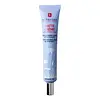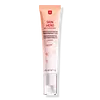Erborian Extra Matte Cream - Mattifying & Blurring Primer Versus Erborian Skin Hero Bare Skin Perfector
What's inside
What's inside
 Key Ingredients
Key Ingredients

 Benefits
Benefits

 Concerns
Concerns

 Ingredients Side-by-side
Ingredients Side-by-side

Cyclomethicone
EmollientDimethicone
EmollientWater
Skin ConditioningVinyl Dimethicone/Methicone Silsesquioxane Crosspolymer
Polymethyl Methacrylate
Dicaprylyl Carbonate
EmollientTrihydroxystearin
Skin ConditioningSilica
AbrasiveDimethicone/Vinyl Dimethicone Crosspolymer
Skin ConditioningPolymethylsilsesquioxane
Isononyl Isononanoate
EmollientTrisiloxane
Skin ConditioningPEG-10 Dimethicone
Skin ConditioningAlcohol
AntimicrobialCetyl PEG/PPG-10/1 Dimethicone
EmulsifyingButylene Glycol
HumectantBis-PEG-18 Methyl Ether Dimethyl Silane
EmollientNymphaea Alba Flower Extract
Skin ConditioningPolysilicone-11
Dimethicone Crosspolymer
Emulsion StabilisingIsoceteth-10
EmulsifyingDisodium EDTA
Mica
Cosmetic ColorantEthylhexylglycerin
Skin ConditioningPentaerythrityl Tetra-Di-T-Butyl Hydroxyhydrocinnamate
AntioxidantTocopherol
AntioxidantPhenoxyethanol
PreservativeParfum
MaskingHexyl Cinnamal
PerfumingAlpha-Isomethyl Ionone
PerfumingLinalool
PerfumingCitronellol
PerfumingGeraniol
PerfumingEugenol
PerfumingLimonene
PerfumingCinnamyl Alcohol
PerfumingCI 77891
Cosmetic ColorantCI 77510
Cosmetic ColorantCyclomethicone, Dimethicone, Water, Vinyl Dimethicone/Methicone Silsesquioxane Crosspolymer, Polymethyl Methacrylate, Dicaprylyl Carbonate, Trihydroxystearin, Silica, Dimethicone/Vinyl Dimethicone Crosspolymer, Polymethylsilsesquioxane, Isononyl Isononanoate, Trisiloxane, PEG-10 Dimethicone, Alcohol, Cetyl PEG/PPG-10/1 Dimethicone, Butylene Glycol, Bis-PEG-18 Methyl Ether Dimethyl Silane, Nymphaea Alba Flower Extract, Polysilicone-11, Dimethicone Crosspolymer, Isoceteth-10, Disodium EDTA, Mica, Ethylhexylglycerin, Pentaerythrityl Tetra-Di-T-Butyl Hydroxyhydrocinnamate, Tocopherol, Phenoxyethanol, Parfum, Hexyl Cinnamal, Alpha-Isomethyl Ionone, Linalool, Citronellol, Geraniol, Eugenol, Limonene, Cinnamyl Alcohol, CI 77891, CI 77510
Water
Skin ConditioningButylene Glycol
HumectantPolymethyl Methacrylate
Glycerin
HumectantSodium Acrylates Crosspolymer-2
AbsorbentBetaine
HumectantPanax Ginseng Root Extract
EmollientGlycyrrhiza Glabra Root Extract
BleachingDioscorea Villosa Root Extract
Skin ConditioningKigelia Africana Fruit Extract
Skin ConditioningZea Mays Starch
AbsorbentBacillus Ferment
Skin ConditioningSqualane
EmollientSodium Hyaluronate
HumectantAmmonium Acryloyldimethyltaurate/Vp Copolymer
Hydroxyethyl Acrylate/Sodium Acryloyldimethyl Taurate Copolymer
Emulsion StabilisingEthylhexylglycerin
Skin ConditioningMica
Cosmetic Colorant1,2-Hexanediol
Skin ConditioningSynthetic Fluorphlogopite
Silica Dimethyl Silylate
EmollientSilica
AbrasivePolysorbate 60
EmulsifyingZein
Skin ConditioningBiosaccharide Gum-4
Skin ConditioningSorbitan Isostearate
EmulsifyingHydrogenated Lecithin
EmulsifyingPolyglyceryl-10 Stearate
Skin ConditioningCaprylic/Capric Triglyceride
MaskingTin Oxide
AbrasivePotassium Sorbate
PreservativeParfum
MaskingHexyl Cinnamal
PerfumingCI 17200
Cosmetic ColorantCI 77288
Cosmetic ColorantCI 19140
Cosmetic ColorantCI 77891
Cosmetic ColorantWater, Butylene Glycol, Polymethyl Methacrylate, Glycerin, Sodium Acrylates Crosspolymer-2, Betaine, Panax Ginseng Root Extract, Glycyrrhiza Glabra Root Extract, Dioscorea Villosa Root Extract, Kigelia Africana Fruit Extract, Zea Mays Starch, Bacillus Ferment, Squalane, Sodium Hyaluronate, Ammonium Acryloyldimethyltaurate/Vp Copolymer, Hydroxyethyl Acrylate/Sodium Acryloyldimethyl Taurate Copolymer, Ethylhexylglycerin, Mica, 1,2-Hexanediol, Synthetic Fluorphlogopite, Silica Dimethyl Silylate, Silica, Polysorbate 60, Zein, Biosaccharide Gum-4, Sorbitan Isostearate, Hydrogenated Lecithin, Polyglyceryl-10 Stearate, Caprylic/Capric Triglyceride, Tin Oxide, Potassium Sorbate, Parfum, Hexyl Cinnamal, CI 17200, CI 77288, CI 19140, CI 77891
Ingredients Explained
These ingredients are found in both products.
Ingredients higher up in an ingredient list are typically present in a larger amount.
Butylene Glycol (or BG) is used within cosmetic products for a few different reasons:
Overall, Butylene Glycol is a safe and well-rounded ingredient that works well with other ingredients.
Though this ingredient works well with most skin types, some people with sensitive skin may experience a reaction such as allergic rashes, closed comedones, or itchiness.
Learn more about Butylene GlycolCi 77891 is a white pigment from Titanium dioxide. It is naturally found in minerals such as rutile and ilmenite.
It's main function is to add a white color to cosmetics. It can also be mixed with other colors to create different shades.
Ci 77891 is commonly found in sunscreens due to its ability to block UV rays.
Learn more about CI 77891Ethylhexylglycerin (we can't pronounce this either) is commonly used as a preservative and skin softener. It is derived from glyceryl.
You might see Ethylhexylglycerin often paired with other preservatives such as phenoxyethanol. Ethylhexylglycerin has been found to increase the effectiveness of these other preservatives.
Hexyl Cinnamal is a fragrance ingredient with a similar scent to jasmine. It can be naturally found in chamomile essential oil.
This ingredient is a known EU allergen and may sensitize the skin. The EU requires this ingredient to be listed separately on an ingredients list.
Hexyl Cinnamal is not water soluble but is soluble in oils.
Learn more about Hexyl CinnamalMica is a naturally occurring mineral used to add shimmer and color in cosmetics. It can also help improve the texture of a product or give it an opaque, white/silver color.
Serecite is the name for very fine but ragged grains of mica.
This ingredient is often coated with metal oxides like titanium dioxide. Trace amounts of heavy metals may be found in mica, but these metals are not harmful in our personal products.
Mica has been used since prehistoric times throughout the world. Ancient Egyptian, Indian, Greek, Roman, Aztec, and Chinese civilizations have used mica.
Learn more about MicaParfum is a catch-all term for an ingredient or more that is used to give a scent to products.
Also called "fragrance", this ingredient can be a blend of hundreds of chemicals or plant oils. This means every product with "fragrance" or "parfum" in the ingredients list is a different mixture.
For instance, Habanolide is a proprietary trade name for a specific aroma chemical. When used as a fragrance ingredient in cosmetics, most aroma chemicals fall under the broad labeling category of “FRAGRANCE” or “PARFUM” according to EU and US regulations.
The term 'parfum' or 'fragrance' is not regulated in many countries. In many cases, it is up to the brand to define this term.
For instance, many brands choose to label themselves as "fragrance-free" because they are not using synthetic fragrances. However, their products may still contain ingredients such as essential oils that are considered a fragrance by INCI standards.
One example is Calendula flower extract. Calendula is an essential oil that still imparts a scent or 'fragrance'.
Depending on the blend, the ingredients in the mixture can cause allergies and sensitivities on the skin. Some ingredients that are known EU allergens include linalool and citronellol.
Parfum can also be used to mask or cover an unpleasant scent.
The bottom line is: not all fragrances/parfum/ingredients are created equally. If you are worried about fragrances, we recommend taking a closer look at an ingredient. And of course, we always recommend speaking with a professional.
Learn more about ParfumThis ingredient is also known as PMMA. It is a polymer microsphere, composed of tiny, perfectly spherical particles formed from repeating units.
In cosmetics, PMMA is mainly used to give a soft or blurring effect. The transparent particles are able to scatter light and help reduce the appearance of fine-lines and imperfections.
PMMA is also able to enhance the texture of products by add a smooth feel.
Learn more about Polymethyl MethacrylateSilica, also known as silicon dioxide, is a naturally occurring mineral. It is used as a fine, spherical, and porous powder in cosmetics.
Though it has exfoliant properties, the function of silica varies depending on the product.
The unique structure of silica enhances the spreadability and adds smoothness, making it a great texture enhancer.
It is also used as an active carrier, emulsifier, and mattifier due to its ability to absorb excess oil.
In some products, tiny microneedles called spicules are made from silica or hydrolyzed sponge. When you rub them in, they lightly polish away dead skin layers and enhance the penetration of active ingredients.
Learn more about SilicaWater. It's the most common cosmetic ingredient of all. You'll usually see it at the top of ingredient lists, meaning that it makes up the largest part of the product.
So why is it so popular? Water most often acts as a solvent - this means that it helps dissolve other ingredients into the formulation.
You'll also recognize water as that liquid we all need to stay alive. If you see this, drink a glass of water. Stay hydrated!
Learn more about Water